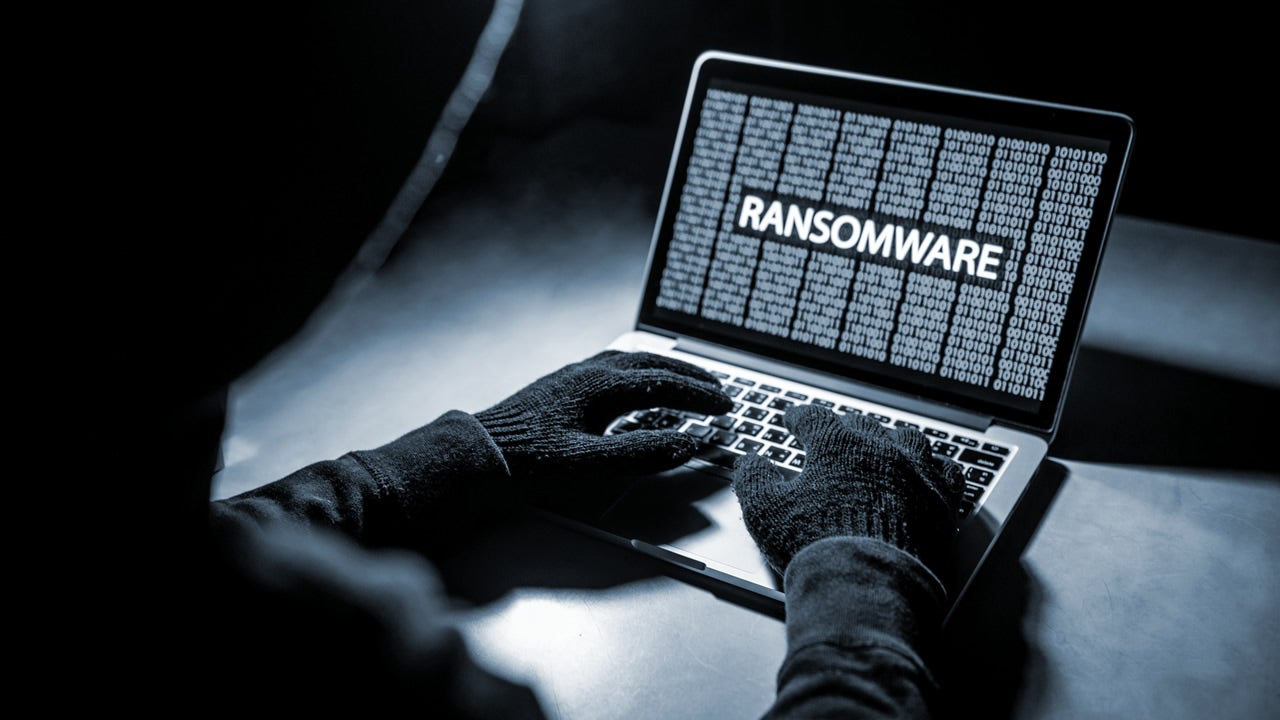Learn
Ransomware Decryption: The Right Tools and How to Recover
Ransomware decryption is the process of reversing the encryption applied by ransomware to restore files to their original, accessible state.
How to Decrypt Ransomware
Ransomware attacks lock organizations out of their critical data through sophisticated encryption, leaving businesses scrambling for solutions. The path to recovery often hinges on one crucial capability: the ability to decrypt affected files and restore normal operations.
Modern ransomware variants have evolved far beyond simple malware, employing military-grade encryption algorithms that can bring entire enterprises to a standstill. Cybersecurity Ventures predicts that a ransomware attack will strike a consumer or business every 2 seconds by 2031, with the average incident costing businesses $4.4 million in 2025. To that end, understanding decryption options has become essential for business continuity.
The good news: Not all ransomware attacks result in permanent data loss. Through a combination of freely available decryption tools, law enforcement collaboration, and strategic backup practices, many organizations can successfully recover their data without paying ransoms.
What Is Ransomware Decryption?
Ransomware decryption refers to the process of reversing the encryption applied by ransomware to restore files to their original, accessible state. This process requires either the original decryption key used by the attackers or specialized tools that exploit weaknesses in the ransomware’s encryption implementation.
Common ransomware variants fall into several categories. File-encrypting ransomware targets specific file types across systems, while crypto-lockers encrypt entire drives or systems. Screen lockers prevent access to systems without encrypting files, and newer variants like RansomHub and Akira specifically target Linux and VMware environments. The FBI identified 67 new ransomware variants in 2024, with FOG, Lynx, and Cicada 3301 among the most frequently reported.
Ransomware Symptoms and Identification
This table outlines common symptoms and indicators to help identify specific ransomware variants.
| Common Symptoms | Ransomware Variant Examples | Potential Indicators |
| Files renamed with unusual extensions (.locked, .encrypted) | LockBit, RansomHub | Modified file extensions matching known ransomware signatures |
| Ransom notes in multiple directories | Akira, PLAY | Text files named “README” or “HOW_TO_DECRYPT” |
| System slowdown and high CPU usage | FOG, Lynx | Encryption process consuming system resources |
| Unable to open documents or images | Dark Angels, Cicada 3301 | File headers corrupted or replaced |
| Desktop wallpaper changed | CryptoLocker variants | Ransom message displayed as wallpaper |
Can You Decrypt Ransomware Files?
Some ransomware files can be decrypted with freely available tools, particularly when encryption algorithms were weak, poorly implemented, or keys have been recovered through law enforcement operations. Kaspersky’s decryption tools alone have been downloaded over 360,000 times since 2018, helping nearly 2 million victims globally recover their data without paying ransoms by early 2024.
However, most modern ransomware uses strong encryption standards like AES-256 or RSA-2048, making decryption impossible without the original decryption key or a specialized tool for the specific strain. The reality is that many victims face limited options if proper backups aren’t available.
Always identify the ransomware strain to determine if decryption is feasible before using any tool. Running the wrong decryptor can cause additional damage to already-encrypted files, making future recovery attempts impossible.
Ransomware Decryption Tools Selection and Use
Identifying the specific ransomware strain before attempting decryption is critical for successful recovery. Each ransomware family uses different encryption methods, and using the wrong tool can permanently corrupt your files.
Reputable sources for validated decryptors include established security vendors and collaborative initiatives. The No More Ransom project, launched in 2016 by Kaspersky, Europol, and the Dutch National Police, provides a centralized repository of decryption tools. Major antivirus vendors like Avast offer 30 free ransomware decryption tools, while Trend Micro provides 27 free tools for various ransomware families.
Variant-Specific Decryptor Tool List
Below is a comparison of a few decryption tools available for specific ransomware variants.
| Ransomware Variant | Tool Name | Download Source & Description | Usage Notes |
| Multiple variants | No More Ransom Portal | Central repository with decryptors | Upload sample file for automatic variant identification |
| CryptoLocker | Kaspersky DecryptorTool | Targets early CryptoLocker variants | Requires infected file and original unencrypted version |
| WannaCry | WanaKiwi | Exploits memory vulnerability | Must run before system restart |
| STOP/Djvu | STOP Djvu Decryptor | Works on offline encryption keys | Success depends on specific variant version |
Always confirm that a tool matches your ransomware strain exactly to avoid data loss.
Step-by-Step Decryption Process
Follow these steps when attempting to decrypt ransomware-affected files:
- Identify the ransomware. Look at ransom notes, file extensions, and any unique markers in encrypted files. Use online identification tools provided by No More Ransom or antivirus vendors to match your specific variant.
- Back up encrypted files. Save encrypted files to a separate, offline location before attempting any decryption. This can prevent data loss in case decryption fails or corrupts files during the recovery process.
- Research available decryption tools. Access comprehensive repositories like No More Ransom or vendor pages. Match the strain precisely; using the tool for the wrong variant can be harmful to your data integrity.
- Download and run the decryption tool. Follow clear instructions from legitimate security providers. Most tools are designed for non-technical users, but some require command-line use. Never grant unnecessary permissions or run unfamiliar executables.
- Restore and clean the system. After successful decryption, scan the system with updated security software. Wipe and reinstall the OS if a full system compromise is suspected to prevent reinfection.
Ransomware Decryption: What If No Tool Exists?
If there is no tool for your ransomware variant, decryption may currently be impossible due to strong encryption. Modern ransomware groups use sophisticated encryption that would take centuries to break with current computing power.
When faced with no available decryption tools, consider these alternative approaches:
- Maintain secure, offline backups for data restoration.
- Monitor law enforcement and security community updates.
Offline backups serve as the first line of defense against permanent data loss. Network segmentation and isolation of infected machines limit spread across your infrastructure. Strong access controls, user training, and layered security minimize infiltration points. When facing severe compromise, wiping and reimaging systems may be the only option.
Expert & Law Enforcement Collaboration
International initiatives such as No More Ransom aggregate tools and knowledge from the cybersecurity community, law enforcement, and vendors to regularly update decryption capabilities. This collaboration has produced tangible results for ransomware victims worldwide.
Major takedowns occasionally result in master key recovery and tool releases for victims. Operation Cronos in February 2024 disrupted LockBit’s infrastructure, leading to arrests and the unmasking of leader Dmitry Khoroshev.
Best Practices for Ransomware Defense and Recovery
Verifying the origin and authenticity of any ransomware decryption tool can protect against malicious software posing as legitimate recovery solutions. Create backup copies of affected data prior to running any tool to help preserve recovery options.
Scanning the environment with updated antivirus solutions both before and after decryption helps identify and remove any lingering malware components. Regular patches and OS updates help prevent reinfection through known vulnerabilities that ransomware groups actively exploit.
The following defensive measures form the foundation of effective ransomware protection:
- Maintain regular, immutable backups offline and test restore procedures.
- Keep operating systems, applications, and security solutions up to date.
- Educate staff on phishing and ransomware tactics.
- Segment networks and use least privilege for sensitive assets.
Case Study: Pharmaceutical Company Recovers from Ransomware in Nine Days
When Bilthoven Biologicals (BBio) experienced its first major ransomware attack, the impact was immediate. Users reported inability to log in or access files, and IT consultant Paul Vries soon discovered a ransom note demanding payment for file decryption.
“The ransomware spread through the domain field and the factory. Basically, everything connected to the Active Directory was compromised,” said Vries. The attack threatened operations at the pharmaceutical company, where vaccine production and sensitive data protection are mission-critical functions.
BBio’s response team moved quickly, disconnecting the network and shutting down infected servers while maintaining unaffected machines to minimize production impact. By the second day, the team had restored the Active Directory and Commvault environment, beginning a systematic recovery process.
“We love the simplicity of the Commvault dashboard. With just a few clicks, we can restore a virtual machine or backups after an attack which is vital in our line of work as a pharmaceutical company with very sensitive data,” Vries explained.
The recovery effort continued around the clock, with team members taking shifts to restore services. Thanks to its prepared backup strategy, BBio fully restored services across multiple offices and its factory in just nine days. Following the incident, BBio implemented additional protections, including air gap technology to strengthen its ransomware resilience.
“If we didn’t have Commvault and the backups were not made before the attack, the situation could have been much worse,” Vries concluded. The company now maintains a formal disaster recovery plan that prioritizes critical systems and establishes clear recovery procedures.
Commvault’s Role in Ransomware Resilience
Commvault’s platform supports data backup and rapid recovery to minimize downtime when ransomware strikes. The platform’s automated workflows can help identify infected files, retrieve clean backups, and restore operations without manual intervention.
Commvault’s centralized platform offers protection across on-premises, cloud, and SaaS environments, addressing the complexity of modern IT infrastructure.
Pairing robust ransomware decryption tools with a proactive data protection strategy creates multiple recovery paths. While decryption tools offer hope when attacks succeed, immutable backups and automated recovery workflows provide the foundation for true cyber resilience.
The rise in ransomware attacks demands a comprehensive defense strategy combining prevention, detection, and rapid recovery capabilities. While decryption tools provide one avenue for recovery, maintaining secure, immutable backups remains the most reliable protection against data loss and business disruption.
We understand the critical nature of your data protection needs, and our team is ready to show you how our solutions can strengthen your ransomware resilience strategy. Request a demo to see how we can help protect your organization’s data.
Related Terms
Ransomware protection
The process of trying to prevent ransomware events and mitigating the risk of successful attacks through comprehensive security measures and recovery capabilities.
Ransomware protection
The process of trying to prevent ransomware events and mitigating the risk of successful attacks through comprehensive security measures and recovery capabilities.
Air gap backup
A backup system that is physically isolated from the main network, creating a security gap that helps prevent ransomware from accessing backup data.
Air gap backup
A backup system that is physically isolated from the main network, creating a security gap that helps prevent ransomware from accessing backup data.
Cyberattack
A cyberattack is a targeted effort by an individual or group to breach the security of an organization’s digital infrastructure.
Cyberattack
A cyberattack is a targeted effort by an individual or group to breach the security of an organization’s digital infrastructure.

Ransomware Reversal

Ransomware 101
